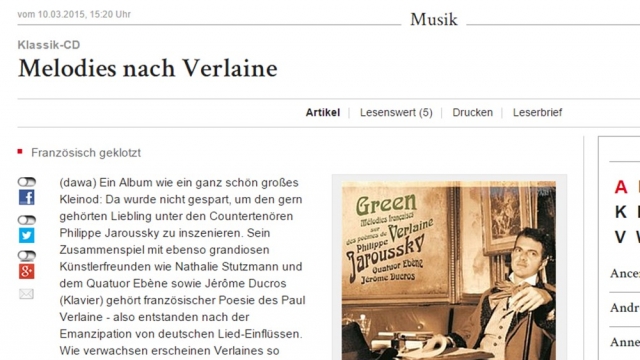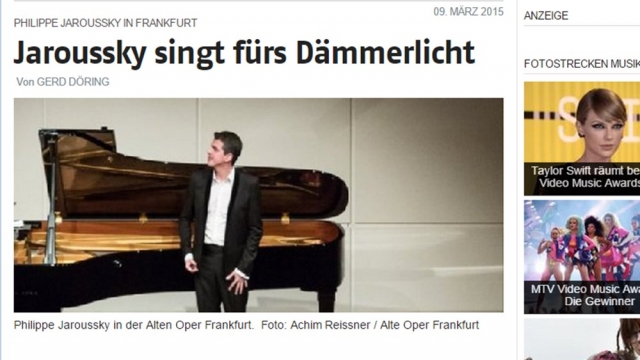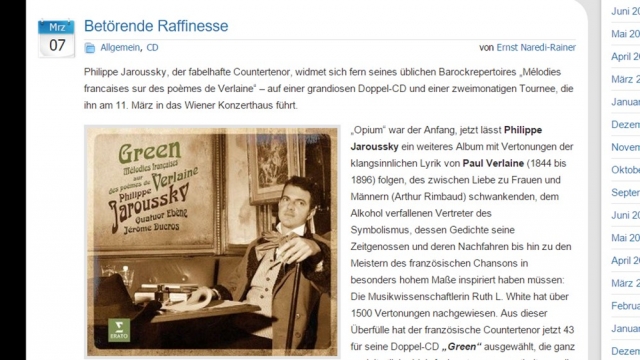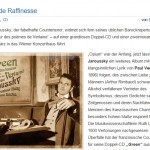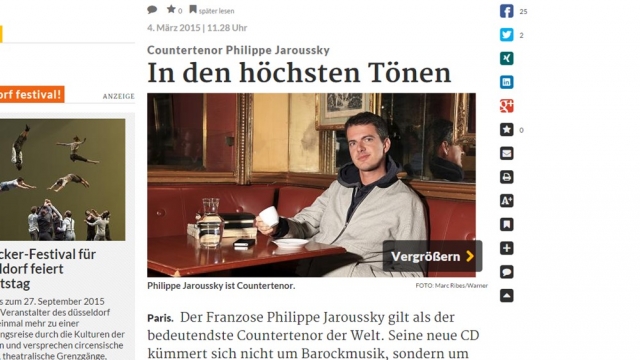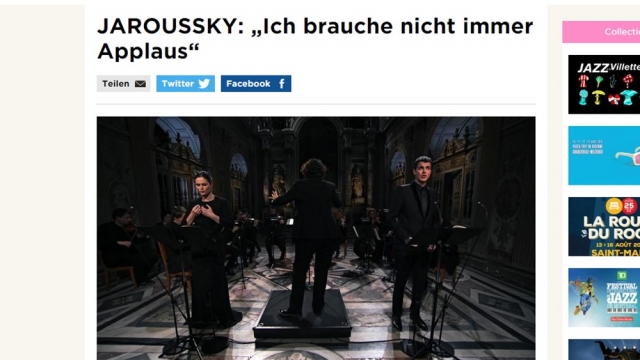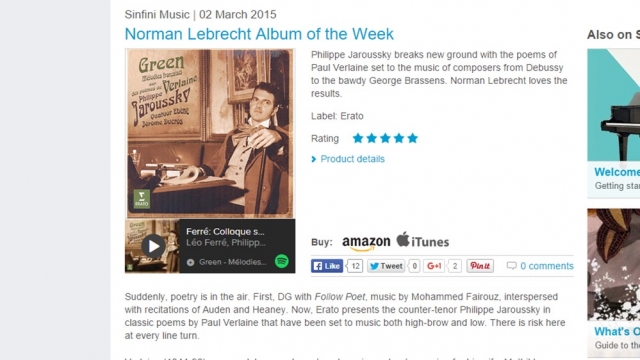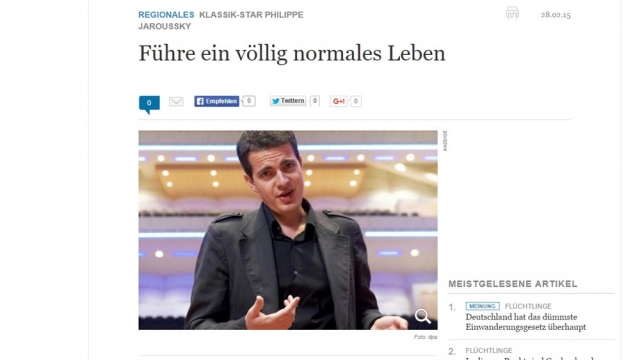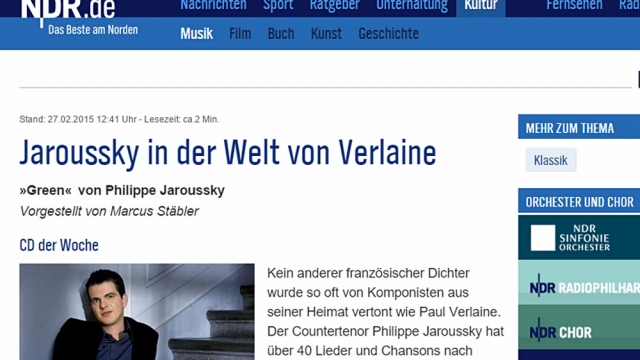2015-03-02, ARTE Magazin
“Als wir den französischen Countertenor Philippe Jaroussky im Dezember zum Interview treffen, hat er am Vorabend das Hamburger Publikum mit Sakralmusik von Vivaldi begeistert. Heute gibt es erst einmal Kamillentee. Philippe Jaroussky kämpft mit der komplizierten Teesieb-Konstruktion – begegnet dem Kratzen im Hals aber gelassen”…
Source/Read more: Arte Concert
The following is not a professional translation; no profit is being made, no infringement of copyright is intended
Jaroussky: “I don’t always need applause”
The charismatic countertenor Philippe Jaroussky pleads for greater openness in music, talks shop about Lady Gaga – and explains why reverent silence can be a competition to any applause.
In December, when we meet the French countertenor Philippe Jaroussky, he had just delighted the Hamburg audience with sacred music by Vivaldi the evening before. Today, first of all, there is chamomile tea. Philippe Jaroussky is struggling with the complicated design of the tea strainer, but is relaxed about his scratchy throat. Apparently, the star of high range singing in can handle pressure quite well. The reason for our meeting is another sacred opus which he is going to perform a little later, together with the Hungarian soprano Emöke Barath, at the magnificent chapel of the Castle Fontainbleau: Pergolesi’s setting to music of the Stabat Mater.
ARTE: A glance at a list of your favourite music reveals: you also like to listen to Pop.
PHILIPPE JAROUSSKY: For me, it’s about an exciting mixture of Classical and Pop. Lorraine Hunt and Cecilia Bartoli next to Lady Gaga and Bruno Mars. I’m not particularly interested in Lady Gaga, but recently, I saw a performance of her on the internet. She was singing Nancy Sinatra’s “Bang Bang” wearing a vermilion leather suit, an enormous wig – but she sang without exaggerating. You can hear the range of her voice, her classical education. She could be one of the greatest Jazz singers of our times, and surely isn’t a Pop monster. We all should open our minds a little more. I have to confess that I didn’t start to discover singers like Ella Fitzgerald or Mercedes Sosa until eight years ago. A veritable shock.
Continue Reading



